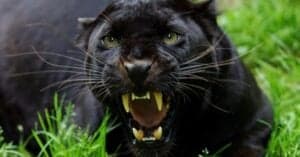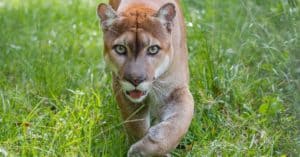The Florida panther (Puma concolor couguar), also goes by the name the Costa Rican puma, Florida cougar, and Florida puma. It ranges throughout southern Florida and is one of the largest land carnivores in the eastern United States. The Florida panther has captured the attention of conservationists due to the fact that it is one of the few remaining big cats in the United States.
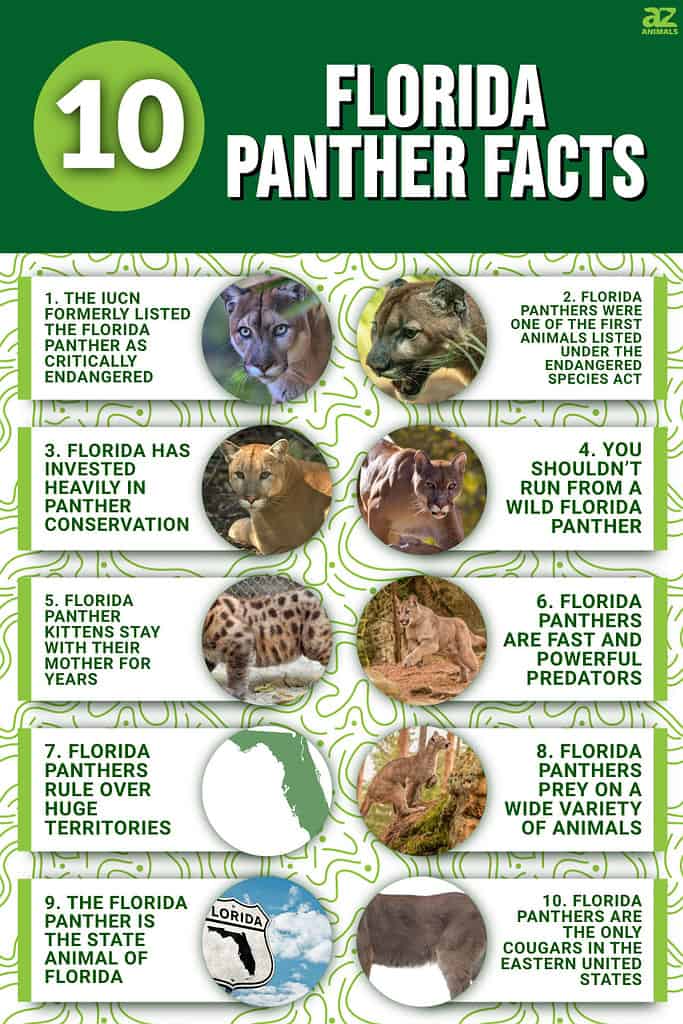
Today, we’ll discuss 10 incredible Florida panther facts and explain what makes these wild cats so amazing.
10. Florida Panthers Are the Only Cougars in the Eastern United States
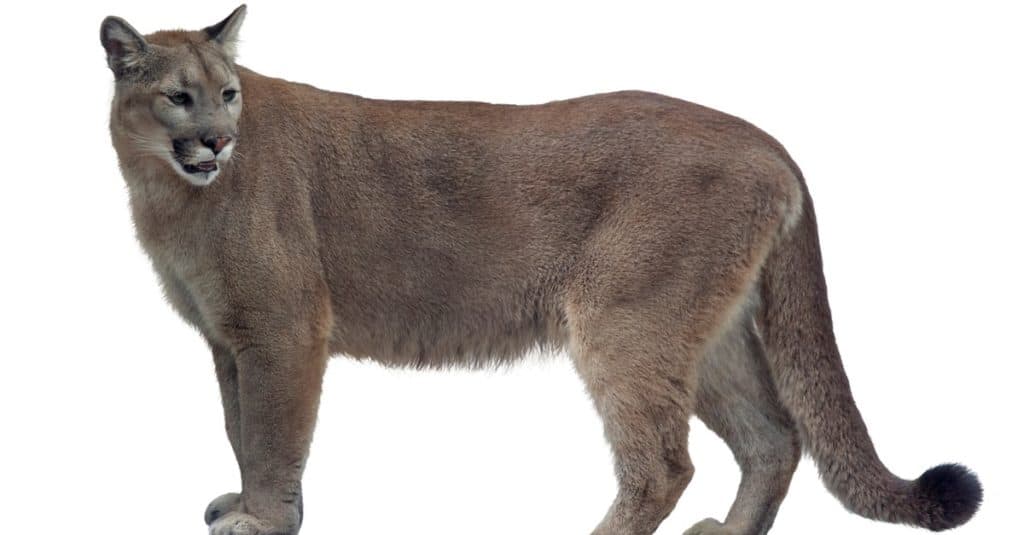
Florida panther is the only cougar left in eastern United States.
©iStock.com/Saddako
As their name implies, North American cougars range throughout North America. You can find them in various regions and habitats, from subarctic forests to humid jungles and grassy plains. That said, most cougar populations today tend to live in the western half of Canada, the United States, and Central America. People extirpated most populations in the eastern half of the continent years ago.
The Florida panther serves as the exception to this rule. Today, it represents the only stable population of cougars in the eastern United States. While some cougars occasionally wander into surrounding states such as Georgia, Florida remains the last bastion for cougars in that part of North America.
9. The Florida Panther Is the State Animal of Florida
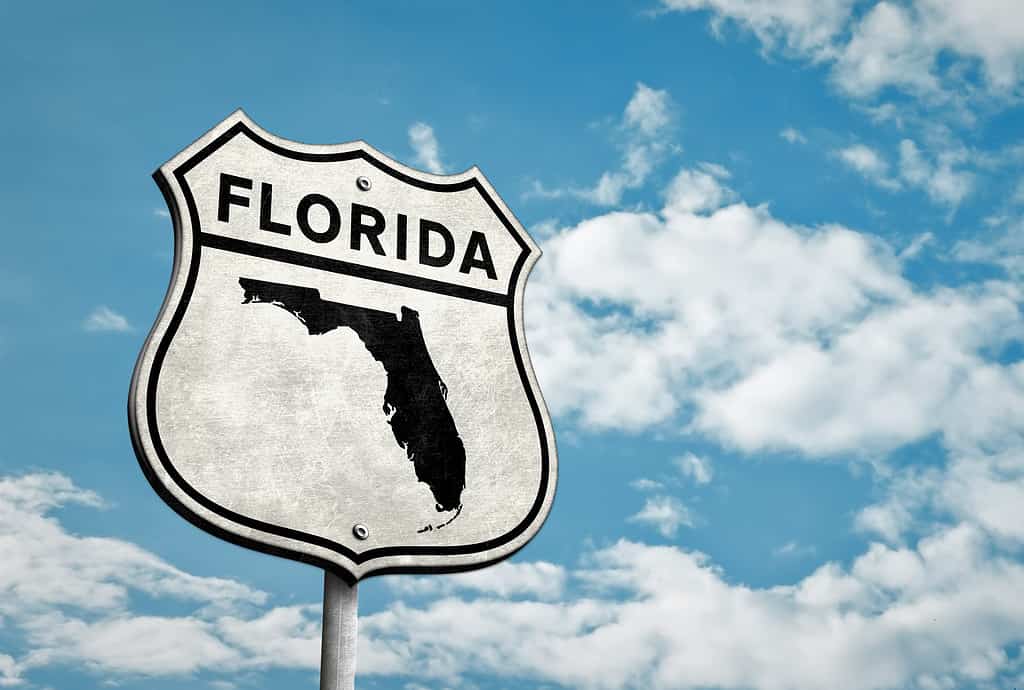
It’s not surprising that this state has chosen the big cat as its state animal.
©gguy44/iStock via Getty Images
Many states in the US recognize an official state mammal. These mammals serve as a representation of the state’s natural history and ecological diversity. Alongside mammals, some states also separately designate official state birds, fish, or insects.
The Florida panther serves as the official state mammal of Florida. At the same time, the state also recognizes the West Indian manatee as its official marine mammal and the bottlenose dolphin as its official saltwater mammal. Other animals to make the list of state animals in Florida include the sailfish, Florida largemouth bass, American alligator, horse conch, northern mockingbird, and zebra butterfly.
8. Florida Panthers Prey on a Wide Variety of Animals
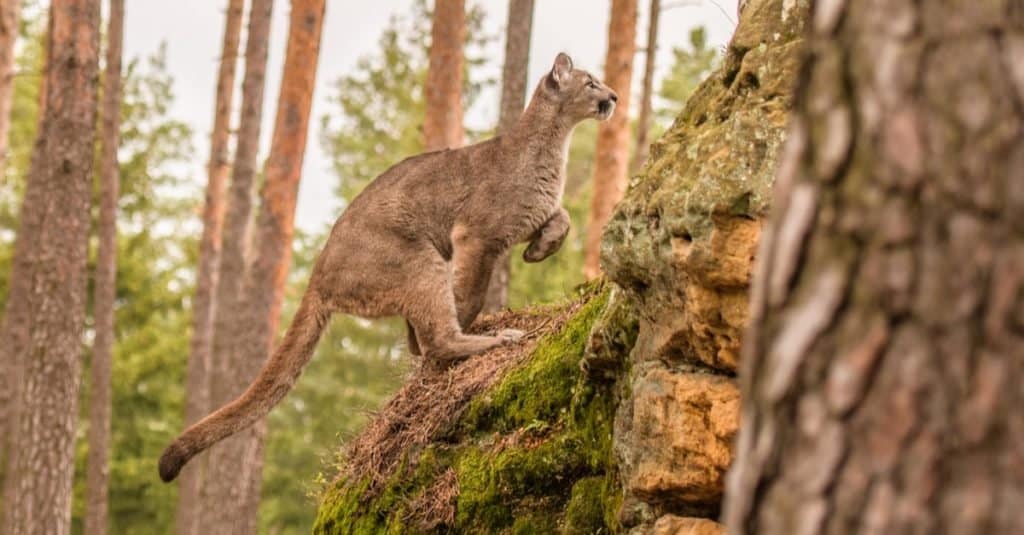
As carnivores, Florida panthers prey on animals in their range.
©Vaclav Sebek/Shutterstock.com
Like other cougars, Florida panthers are carnivores. They prey both on small and large animals within their native range. Small animals in their diet include raccoons, armadillos, rodents, birds, and rabbits. Meanwhile, large prey includes deer, wild pigs, storks, and even small alligators.
Florida panthers will also readily go after domesticated animals and livestock, such as cows, goats, sheep, horses, pigs, chickens, cats, and dogs. They are nocturnal hunters and will adapt their hunting environment depending on where they can most readily find food. An adult Florida panther needs to eat around 20 pounds of meat per day to survive. That said, female Florida panthers with cubs may need to catch around twice that much.
7. Florida Panthers Rule Over Huge Territories

Florida Panthers mostly just remain in the Everglades and southern Florida.
©Vladimir Molnar/iStock via Getty Images
Historically, Florida panthers ranged throughout the entire southeastern United States. However, today they are predominantly contained to the everglades and certain areas of southern Florida. That means that they now live in only 5% of their historic range. You can find them in pinelands, hardwood forests, and freshwater swamp forests.
Florida panthers require contiguous habitats. Generally speaking, male Florida panthers require larger territories than females. Males commonly command a territory of anywhere from 200 to 250 square miles. A single male may breed with anywhere from 2 to 5 females, whose ranges may overlap with the male.
6. Florida Panthers Are Fast and Powerful Predators
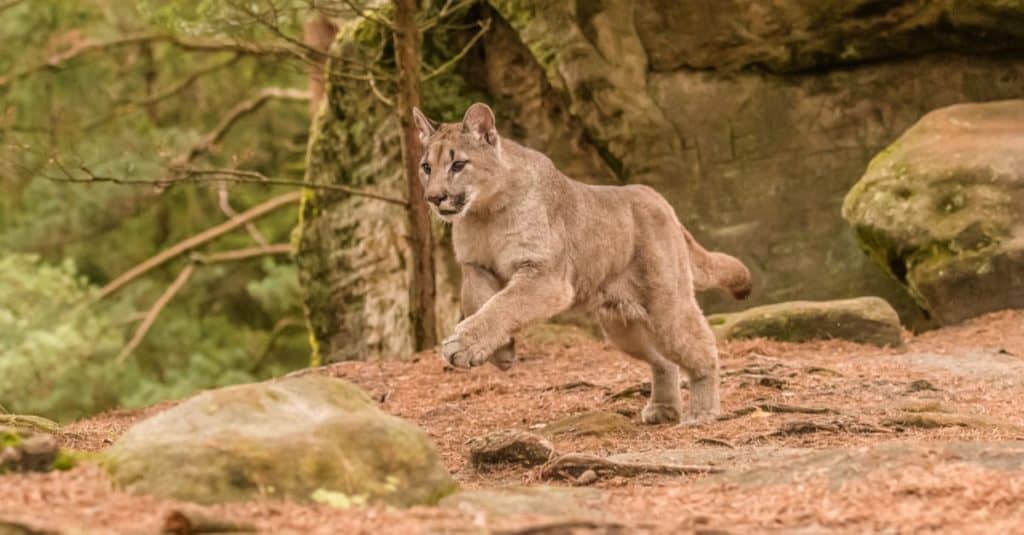
Florida panthers are very fast.
©Vaclav Sebek/Shutterstock.com
North American cougars – including the Florida panther – rank as the largest cats in North America. Male Florida panthers can weigh up to 160 pounds. In terms of measurement, they range between 5.9 and 7.5 feet long and reach roughly 24 to 28 inches tall at the shoulder. Meanwhile, females only measure about half the size of males, weighing between 64 and 100 pounds on average.
Florida panthers are easily the most dominant land predators in their home range. They can run up to 35 miles per hour, although typically can only maintain this speed for short distances. Their preferred hunting method involves sneaking up on their prey and then launching a surprise attack from behind. They can leap more than 15 feet when attempting to pounce on their prey. Despite their hunting skills, no known records exist of Florida panther attacks on humans.
5. Florida Panther Kittens Stay With Their Mother For Years
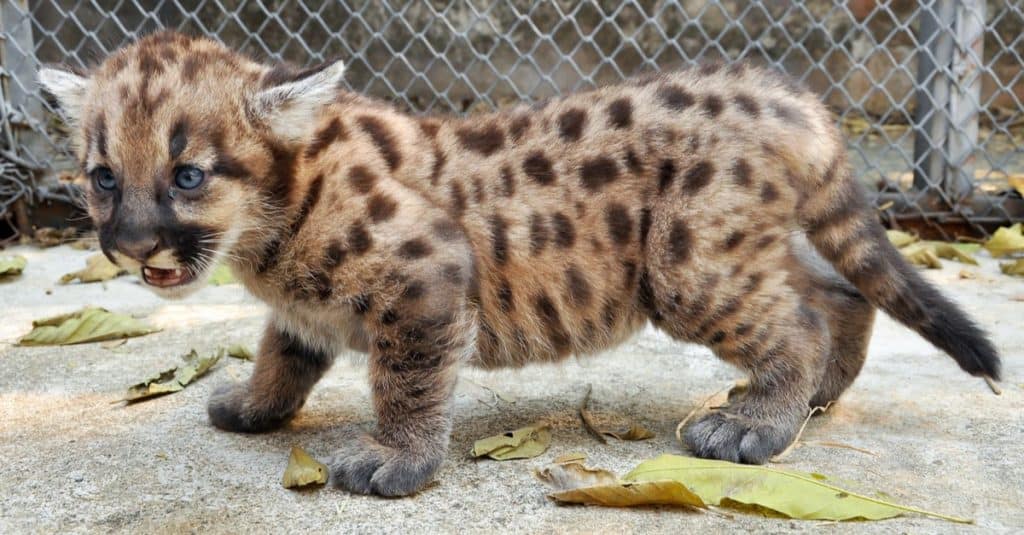
When they are born, they have spots, but they lose them as they grow.
©J.NATAYO/Shutterstock.com
Before they give birth, female Florida panthers create a den where they can raise their kittens. They often locate their dens in dense shrubs with access to plenty of available prey. Kittens remain in the den for the first 6 to 8 weeks of life. For the first 2 to 3 weeks, the mother stays close to and nurses the kittens. At around 3 weeks, the mother will begin to hunt prey to bring back for her cubs.
Once they’re old enough to leave the den, young Florida panthers begin to hunt alongside their mother. Only female panthers devote time to raising their young, as male and female panthers avoid each other outside of the breeding season. Florida panther kittens remain with their mother until they can hunt and live independently. Typically, this occurs when the young cats are 2 years old.
4. You Shouldn’t Run From a Wild Florida Panther
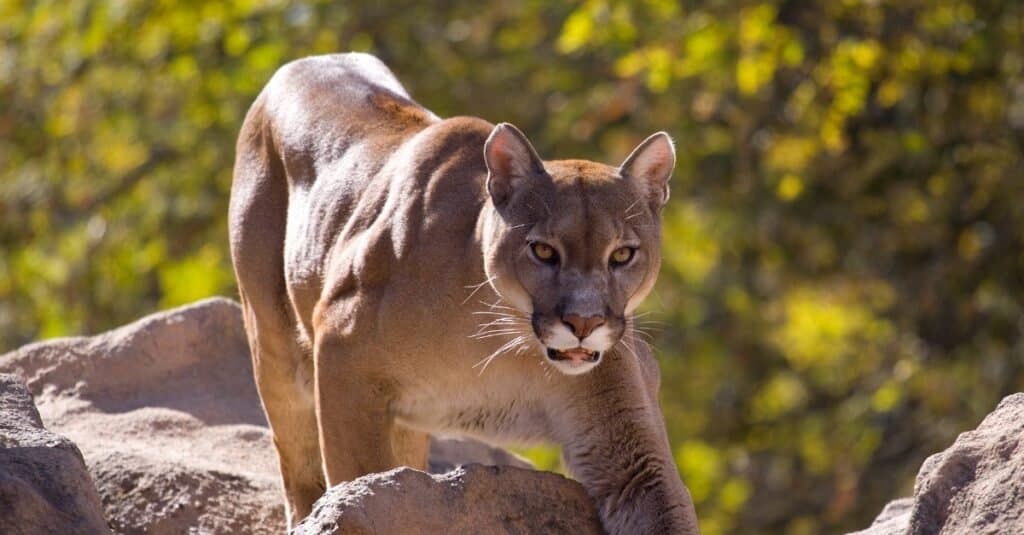
Never turn your back on a Florida panther.
©iStock.com/SandmanXX
Different wildlife encounters require specific responses for you to maximize your chance of reaching safety. For example, if you encounter a wild moose or elk, your best bet is to create space. That may require you to run away or climb a tree. As for bears, experts encourage you to back up slowly or talk to the bear in quiet tones. If that doesn’t work, you should stand your ground and make noise until the bear makes contact, then fall and play dead while protecting your head and neck.
Meanwhile, if you encounter a Florida panther, don’t run away. Running away could trigger the panther’s predator instinct. Instead, you should attempt to make yourself as large as possible and make loud noises while backing away. Whatever you do, don’t turn around and run. If you have to fight, do your best to protect your head and neck.
3. Florida Has Invested Heavily in Panther Conservation
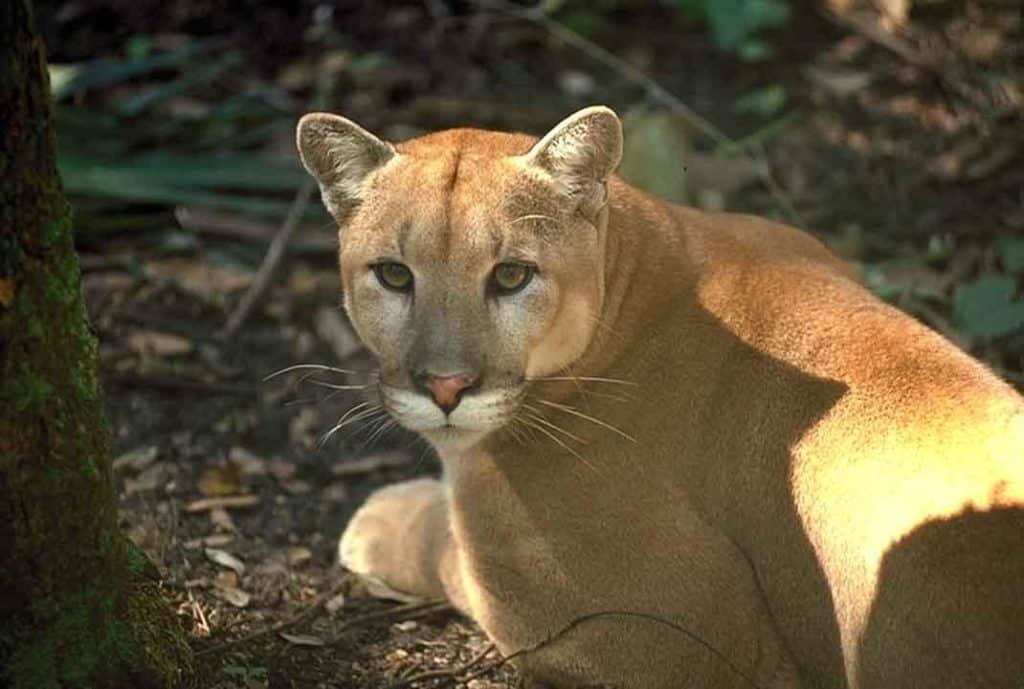
Efforts have been made to conserve the population of Florida panthers.
©U.S. Fish and Wildlife Service Southeast Region / CC BY 2.0, Flickr – License
Over the past 50 years, Florida has made extensive efforts to aid in the recovery of the Florida panther population. One of the first steps the state took was bringing in 8 female panthers from Texas in the 1990s. This was done to help with the population’s genetic diversity, as inbreeding was causing birth defects and health problems.
Another effort that Florida is taking is to create roadway crossings for panthers. Researchers collect information about panther habitats and then identify areas for panther crossings. These crossings allow panthers to pass between areas of their territory that are divided by roads, housing divisions, or other man-made obstacles.
2. Florida Panthers Were One of the First Animals Listed Under the Endangered Species Act
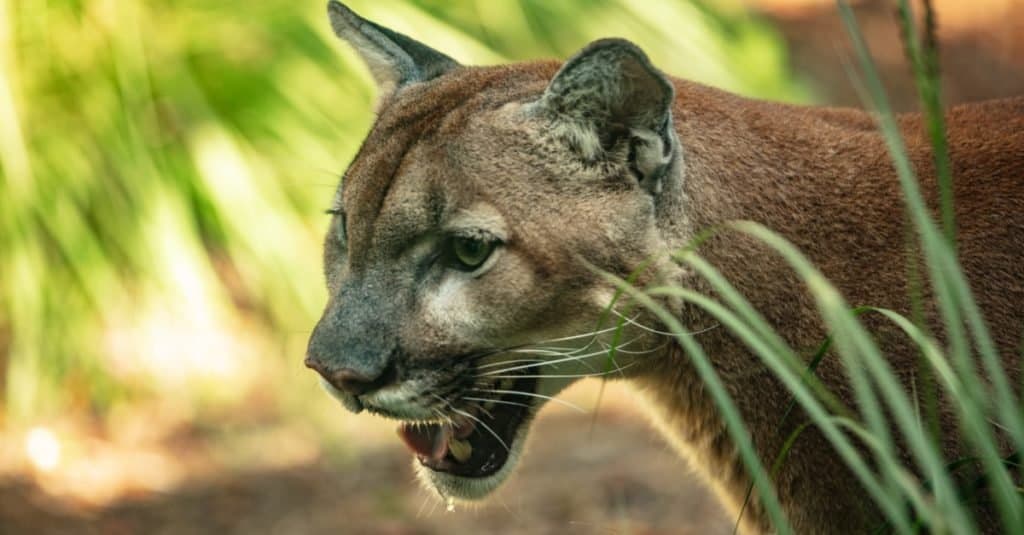
Florida panther was one of the first protected animals.
©J.A. Dunbar/Shutterstock.com
In response to the decline of several animal populations, the early 1900s saw the rise of numerous conservation efforts. This led to several targeted laws to protect wildlife, such as the Lacey Act of 1900 and the Migratory Bird Conservation Act of 1937. Passed by Congress in 1973, The Endangered Species Act of 1973 serves as one of the primary pieces of legislation designed to protect wildlife in the United States. It expanded upon previous acts to provide a legal framework for conserving endangered and threatened animals and plants.
Shortly after its passage, the Endangered Species Act identified the Florida panther as an endangered species. This made the Florida panther one of the first animals protected under the law. Over the years, the list of animals protected under the act has grown substantially. As of 2016, the ESA listed 1,367 animals and 901 plants as threatened or endangered.
1. The IUCN Formerly Listed the Florida Panther as Critically Endangered

The Florida panther is the most endangered cat in North America.
©iStock.com/fotoguy22
The number of Florida panthers in the wild has declined dramatically over the last several generations. In the 1970s, researchers estimated that only around 20 Florida panthers remained in southern Florida. The largest threats faced by Florida panthers include vehicular collisions, loss of habitat, and territorial disputes with other panthers.
The decline in the population of wild Florida panthers prompted the IUCN to list it as a Critically Endangered species. However, the IUCN has not listed the Florida panther since 2008. Thanks to conservation efforts, researchers estimate that there are now around 230 Florida panthers in the wild. Still, Florida panthers still face complex threats. It remains to be seen whether the IUCN will reconsider adding the species to its list of endangered animals.
The photo featured at the top of this post is © jo Crebbin/Shutterstock.com
Thank you for reading! Have some feedback for us? Contact the AZ Animals editorial team.




